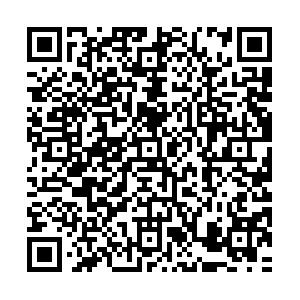| [1] |
Quaia E. The real capabilities of contrast-enhanced ultrasound in the characterization of solid focal liver lesions[J]. Eur Radiol, 2011, 21(3):457-462. doi: 10.1007/s00330-010-2007-0
|
| [2] |
Quaia E. Solid focal liver lesions indeterminate by contrast-enhanced CT or MR imaging: the added diagnostic value of contrast-enhanced ultrasound[J]. Abdom Imaging, 2012, 37(4):580-590. doi: 10.1007/s00261-011-9788-8
|
| [3] |
Quaia E, De Paoli L, Angileri R, et al. Indeterminate solid hepatic lesions identified on non-diagnostic contrast-enhanced computed tomography: assessment of the additional diagnostic value of contrast-enhanced ultrasound in the non-cirrhotic liver[J]. Eur J Radiol, 2014, 83(3):456-462. doi: 10.1016/j.ejrad.2013.12.012
|
| [4] |
Sporea I, Badea R, Martie A, et al. Contrast enhanced ultrasound for the characterization of focal liver lesions[J]. Med Ultrason, 2011, 13(1):38-44. http://cn.bing.com/academic/profile?id=2418127345&encoded=0&v=paper_preview&mkt=zh-cn
|
| [5] |
Dhamija E, Paul SB. Role of contrast enhanced ultrasound in hepatic imaging[J]. Trop Gastroenterol, 2014, 35(3):141-151. doi: 10.7869/tg
|
| [6] |
Sporea I, Martie A, Bota S, et al. Characterization of focal liver lesions using contrast enhanced ultrasound as a first line method: a large monocentric experience[J]. J Gastrointestin Liver Dis, 2014, 23(1):57-63. http://cn.bing.com/academic/profile?id=2188594106&encoded=0&v=paper_preview&mkt=zh-cn
|
| [7] |
Joshi P, George RA, Tyagi AK, et al. Efficacy of contrast enhanced grey scale ultrasound in characterisation of hepatic focal lesions: a pilot study[J]. Med J Armed Forces India, 2014, 70(3):230-236. doi: 10.1016/j.mjafi.2014.05.004
|
| [8] |
Friedrich-Rust M, Klopffleisch T, Nierhoff J, et al. Contrast-enhanced ultrasound for the differentiation of benign and malignant focal liver lesions: a meta-analysis[J]. Liver Int, 2013, 33(5):739-755. doi: 10.1111/liv.12115
|
| [9] |
Pradubpongsa P, Dhana N, Jongjarearnprasert K, et al. Adverse reactions to iodinated contrast media: prevalence, risk factors and outcome-the results of a 3-year period[J]. Asian Pac J Allergy Immunol, 2013, 31(4):299-306. http://cn.bing.com/academic/profile?id=2076428633&encoded=0&v=paper_preview&mkt=zh-cn
|
| [10] |
Bruder O, Schneider S, Pilz G, et al. 2015 update on acute adverse reactions to gadolinium based contrast agents in cardiovascular MR. largemulti-national and multi-ethnical population experience with 37788 patients from the EuroCMR Registry[J]. J Cardiovasc Magn Reson, 2015, 17:58. doi: 10.1186/s12968-015-0168-3
|
| [11] |
Fakhran S, Alhilali L, Kale H, et al. Assessment of rates of acute adverse reactions to gadobenate dimeglumine: review of more than 130, 000 administrations in 7.5 years[J]. AJR Am J Roentgenol, 2015, 204(4):703-706. doi: 10.2214/AJR.14.13430
|
| [12] |
Weller A, Barber JL, Olsen OE. Gadolinium and nephrogenic systemic fibrosis: an update[J]. Pediatr Nephrol, 2014, 29(10):1927-1937. doi: 10.1007/s00467-013-2636-z
|
| [13] |
Idée JM, Fretellier N, Robic C, et al. The role of gadolinium chelates in the mechanism of nephrogenic systemic fibrosis: a critical update[J]. Crit Rev Toxicol, 2014, 44(10):895-913. doi: 10.3109/10408444.2014.955568
|
| [14] |
Soulez G, Bloomgarden DC, Rofsky NM, et al. Prospective cohort study of nephrogenic systemic fibrosis in patients with stage 3-5 chronic kidney disease undergoing MRI with injected gadobenate dimeglumine or gadoteridol[J]. AJR Am J Roentgenol, 2015, 205(3):469-478. doi: 10.2214/AJR.14.14268
|
| [15] |
Zhang B, Liang L, Chen W, et al. An updated study to determine association between gadolinium-based contrast agents and nephrogenicsystemic fibrosis[J]. PLoS One, 2015, 10(6):e0129720. doi: 10.1371/journal.pone.0129720
|
| [16] |
Thomsen HS, Morcos SK, Almén T, et al. Nephrogenic systemic fibrosis and gadolinium-based contrast media: updated ESUR Contrast Medium Safety Committee guidelines[J]. Eur Radiol, 2013, 23(2):307-318. doi: 10.1007/s00330-012-2597-9
|
| [17] |
Solivetti FM, Elia F, Musicco F, et al. Anaphylactic shock induced by sulphur hexafluoride in an individual with no history of heart disease: case report and literature review[J]. Ultraschall Med, 2012, 33(6):597-598. doi: 10.1055/s-00000089
|
| [18] |
Levano JA, Jimenez MA, Laiseca A, et al. Anaphylactic shock due to SonoVue[J]. Ann Allergy Asthma Immunol, 2012, 108(3):208-209. doi: 10.1016/j.anai.2011.12.011
|

 点击查看大图
点击查看大图




 下载:
下载:


